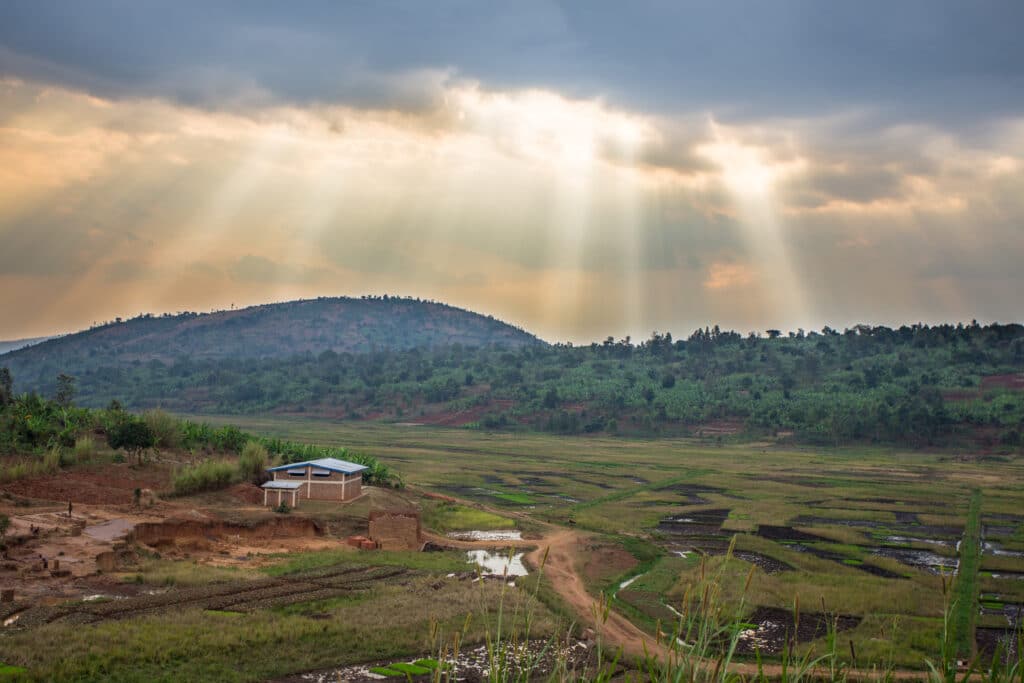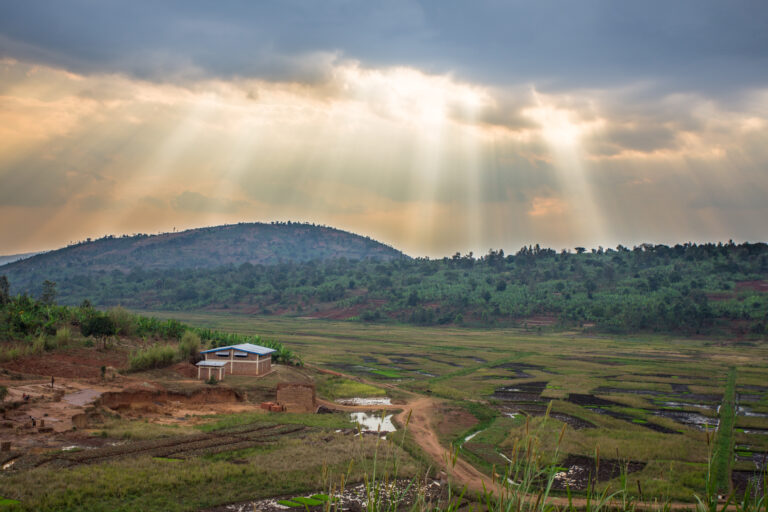
Here at Remitly, we love celebrating our customers and their vibrant traditions—including their heritage foods.
Today, let’s journey to Burundi, a small landlocked country located in East Africa, to explore its national dish—ibiharage.
This delicious and nutritious dish of fried beans is not just food; it’s a celebration of community and heritage.
Cultural Significance
Ibiharage holds a significant place in the hearts of the people of Burundi. In a nation where community gatherings and family are essential, this African food is more than a side dish; it’s a medium for unity and cultural preservation.
A staple not just in Burundi but also in neighboring Rwanda, ibiharage transcends political and geographic boundaries and has even inspired variations like Rwandan fried beans.
Common Ingredients
A list of common ingredients for making ibiharage includes:
- Kidney beans
- Navy beans or white beans
-
Large onions
-
Garlic cloves
-
Palm oil or vegetable oil
-
Red pepper
-
Boiling water
-
Salt
This rich combination of ingredients highlights the agricultural blessings of the land of Burundi and Central Africa as a whole.
Traditional Cooking Method
The traditional recipe for making ibiharage starts with boiling the beans until they’re soft. After boiling, drain the beans and set them aside. Next, sauté the large onions and garlic cloves in a cup of cooking oil—preferably palm oil, which adds a distinct flavor and vibrant color to the dish.
Then, add the drained beans to the mix and fry them until they are well-coated in the oil and seasonings. Add red pepper to taste, and there you have it.
While kidney beans are most commonly used, you can also find versions made with navy beans or white beans. In Rwanda, a similar dish goes by the name of Rwandan fried beans but sometimes with slight variations like the inclusion of tomatoes.
Spices can also vary, and some adventurous cooks might even add a touch of berbere, an Ethiopian spice mix, or boko boko harees, an Arabic-inspired spice blend found in Egyptian cuisine and other African traditional foods.
Classic Recipe
Here is a straightforward recipe for you to try:
Ingredients:
- 2 cups kidney beans
- 1 large onion, chopped
-
1 garlic clove, minced
-
1 cup cooking oil (palm or vegetable oil)
-
Red pepper flakes to taste
-
Boiling water
-
Salt to taste
Instructions:
- Boil the kidney beans in boiling water until soft. Drain and set aside.
- In a large pan, heat the oil and sauté the onions and garlic until translucent.
- Add the drained beans to the pan and fry for 10-15 minutes.
- Add red pepper and salt to taste.
- Serve warm with fried plantains or cassava as a side dish.
More about Burundi’s People and Foods
The culinary landscape of Burundi extends beyond ibiharage to include other rich foods like cassava, fried plantains, and a variety of stews. Burundian cuisine reflects the tapestry of cultures that make up this East African nation, with influences from Arabic traders to neighboring Central African countries.
Burundi’s cuisine draws from its family farms. Agriculture in Burundi plays a crucial role in the country’s economy and sustenance, serving as the backbone for both livelihood and food security.
The majority of the population in this East African nation is engaged in agricultural activities, primarily subsistence farming. The fertile lands of Burundi yield a variety of crops such as coffee, tea, maize, bananas, and cassava, among others.
However, the sector faces challenges including land scarcity, periodic droughts, and limited access to modern farming technologies. Coffee remains the leading export crop, contributing significantly to the nation’s foreign exchange. Despite the hurdles, agriculture continues to be the lifeblood of Burundi, deeply intertwined with the country’s culture, economy, and daily life.
Visit the homepage, download our app, or check out our Help Center to get started.
